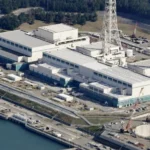Industry leaders warn that this surge could strain supply chains already kept intentionally tight by chipmakers to protect profits. Xiaomi president Lu Weibing recently highlighted that the pressure on memory supply next year will be even more intense than in 2025, likely resulting in higher retail prices.
Consultancy expert William Keating echoed these concerns, stating that shortages will impact PC, smartphone, and server production, ultimately passing costs onto consumers. Samsung, SK hynix, Micron, and SanDisk are among the top memory chip producers benefiting from rising demand. Samsung has announced plans for a new semiconductor plant in South Korea, while SK hynix recently posted record quarterly earnings fueled by DRAM and NAND price growth.
Analysts from TrendForce indicate that the memory market is in a strong upward pricing cycle, prompting brands to revise their 2026 smartphone and laptop production forecasts downward. Cars may be less affected due to lower memory requirements, but uncertainty remains, especially in China where SMIC reports client hesitancy over future chip availability.
Experts attribute the shortage to the combination of booming AI demand and years of restrained investment in expanding chip production. With memory chip prices already climbing sharply, consumers and businesses should expect higher costs, longer wait times, and tighter supply agreements well into early 2026.
#MemoryChipShortage #AIImpact #TechPrices2026 #DRAM #NANDStorage #GadgetPrices #SemiconductorNews







